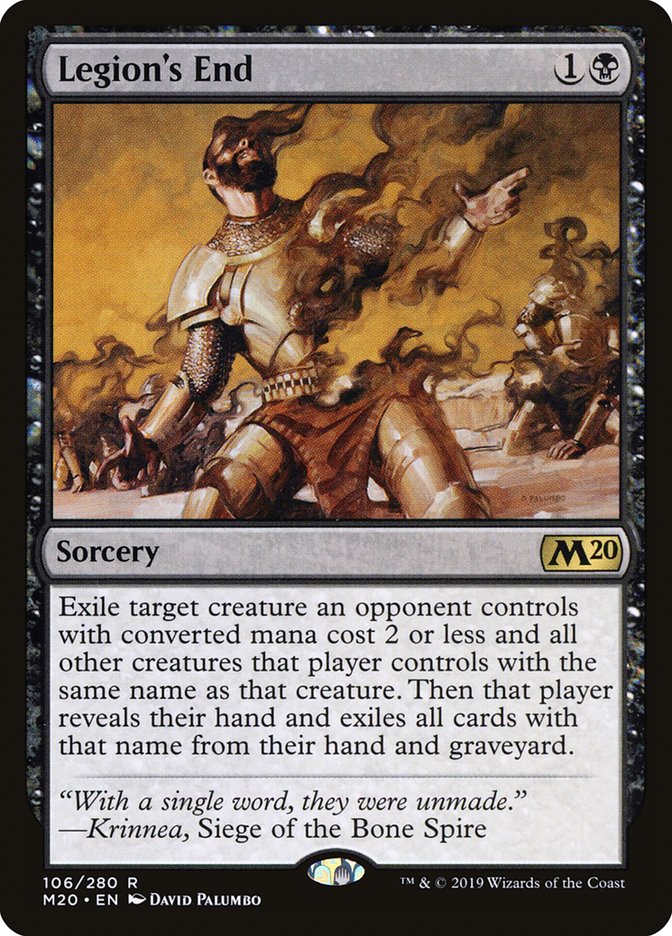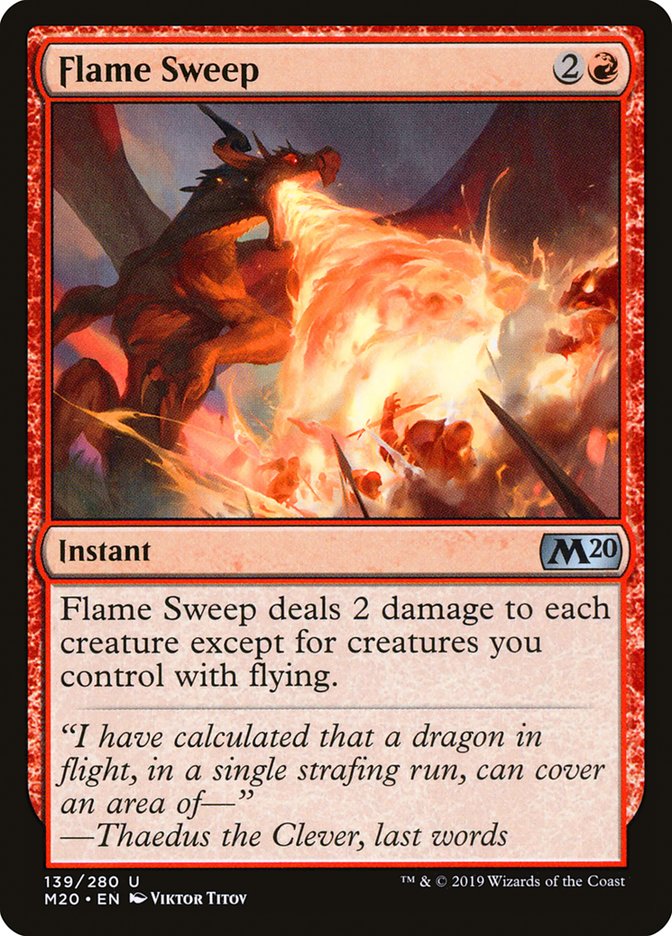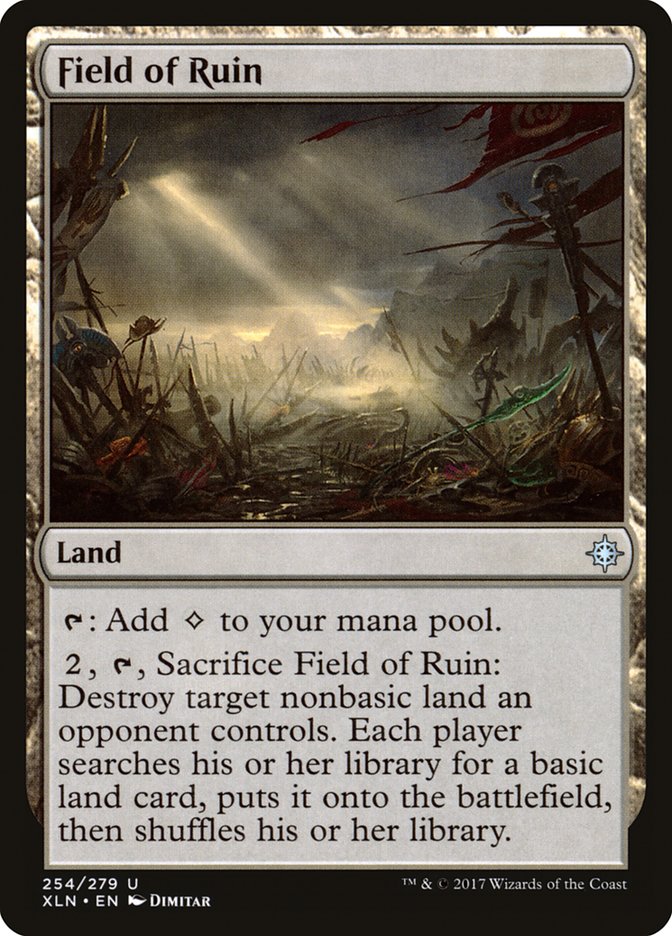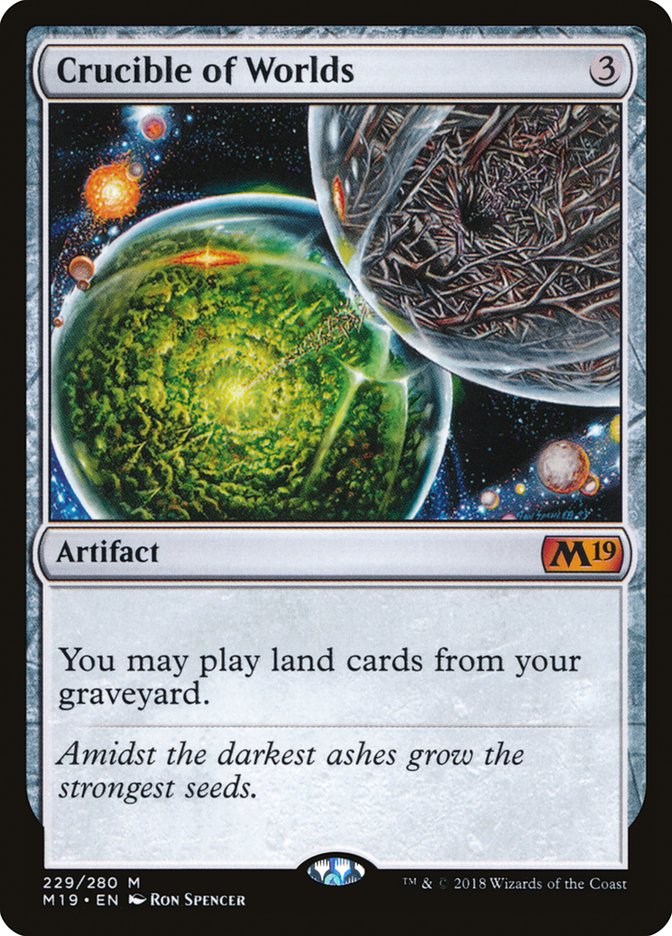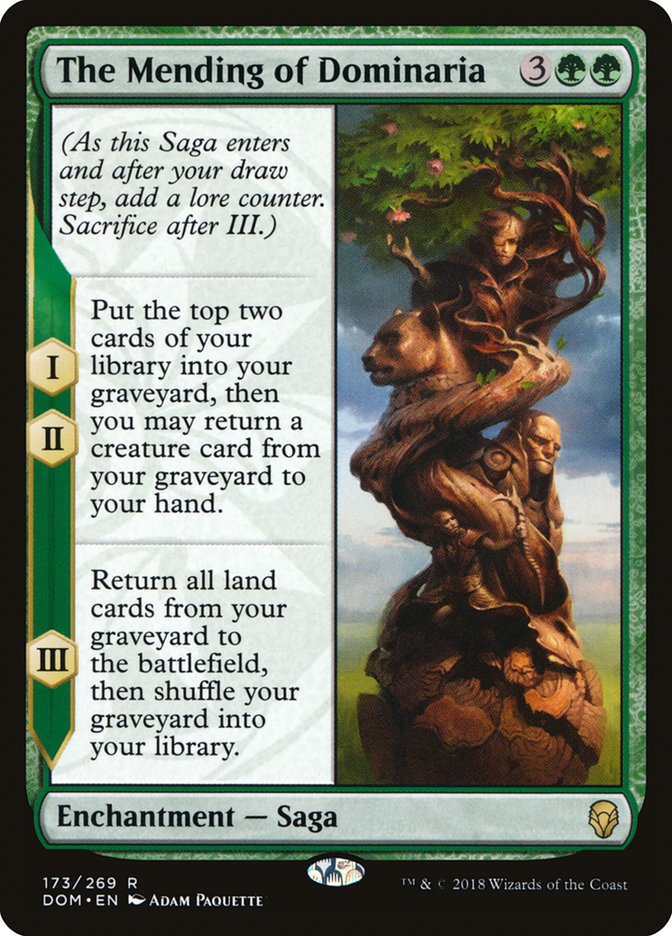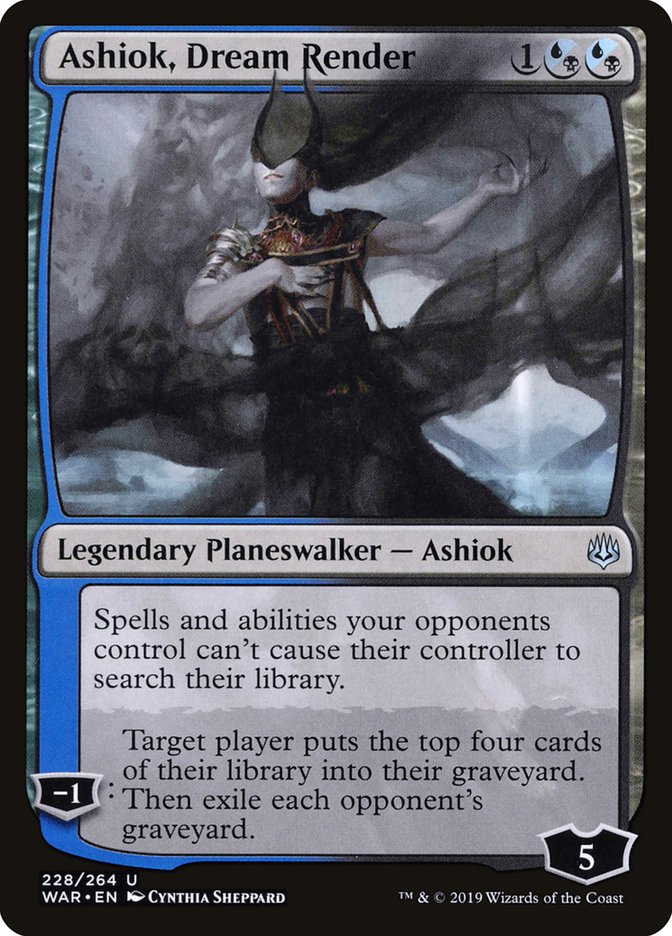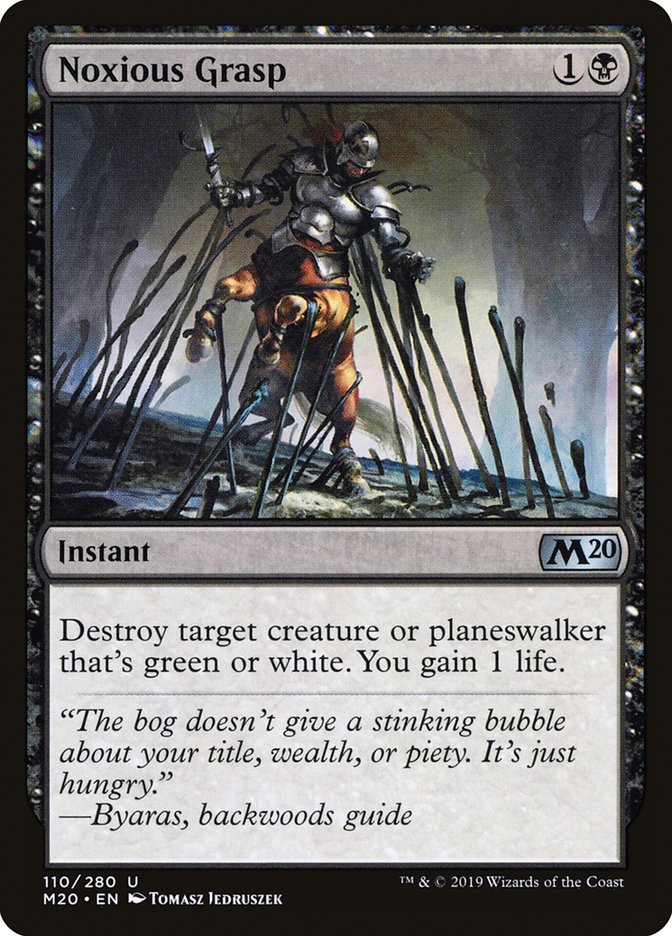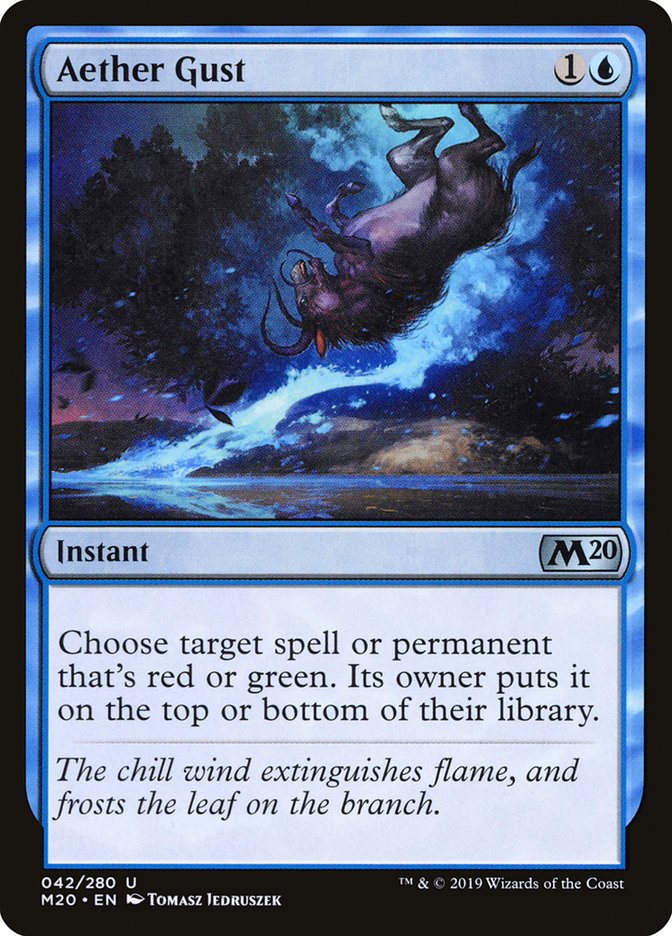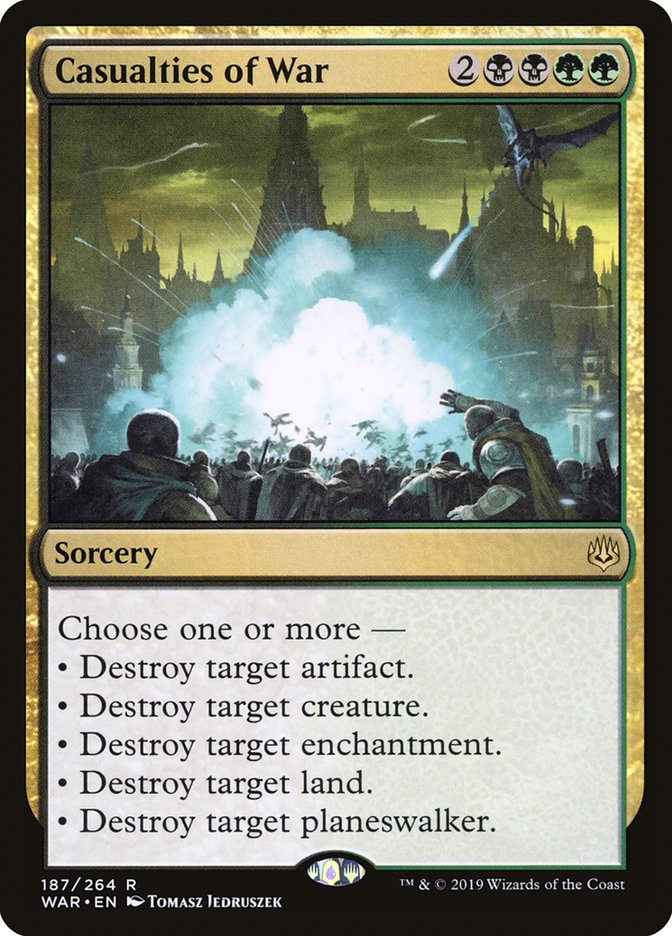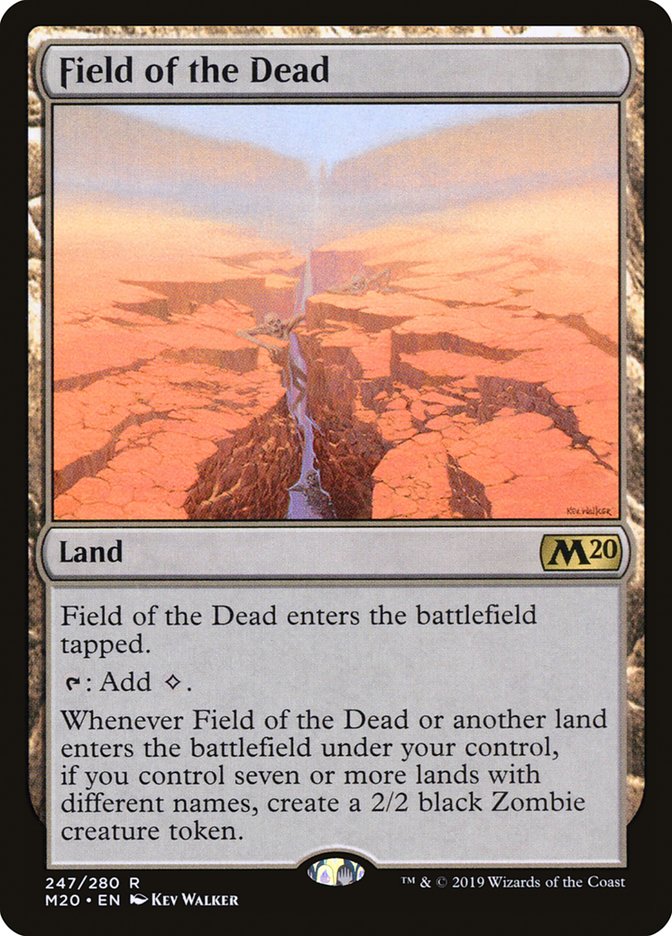So Scapeshift went from being a deck that hadn’t really put up any results to half of the Top 8 at Grand Prix Denver, which is enough to redefine Core Set 2020 Standard moving forward. So, the first question everyone should be asking is, “What does this mean?”
Can the format adapt? Will Scapeshift decks get crushed next week, or is it time to get on board? Is there tech for the mirror?
Creatures (12)
Planeswalkers (4)
Lands (28)
Spells (16)

My guess is that the format can and will adjust, but that beating Scapeshift isn’t simple. Right after GP Denver ended, my boss, Cedric, said he thought Mono-Blue Aggro shredded Scapeshift, while the Grand Prix winner, Luis Scott-Vargas, said he thought Scapeshift had a bye against Mono-Blue, so I think it’s fair to assume that it’ll take people at least most of the week to sort out which decks are actually good now that Scapeshift is the deck to beat. I’ve participated in a lot of Fact or Fiction articles where I’ve argued against things being the deck to beat because formats are often too open for there to be a single deck to beat, but I think that in Core Set 2020 Standard, right now, Scapeshift is the deck to beat.
In the short term, I think people are going to try a lot of things like Crafty Cutpurse as dedicated hate for Scapeshift, but I don’t really think it’ll work out well because Crafty Cutpurse is fairly easy to beat with Teferi, Time Raveler or fair-mode Field of the Dead. An uptick in Vampires with Legion’s End might give them what they need to push through, or Feather with Flame Sweep might work out similarly, since that deck conveniently already plays creatures that live through it. I think pressure backed by a short-term answer or mild disruption is likely better than trying to beat Scapeshift with a single trick.
Elementals completely disappeared at GP Denver, which likely means they’re not well-positioned against other decks either, but Flood of Tears is a reasonable way to go over the top of Scapeshift if you can figure out how to beat a good portion of the rest of the field with it, and Nexus of Fate is probably similarly well-positioned against Scapeshift, so planning to resolve a big blue spell is at least a plausible starting point for finding a good Scapeshift matchup.
If you find yourself looking to jump on board but beat the mirror, you have a lot of options.
Field of Ruin is a great start and getting Field of the Dead advantage is a great way to win the mirror. In general, I think this card should pick up a lot, especially out of decks that can answer a wave or two of Zombies from Scapeshift.
Going a level beyond that, you want to look for ways to recur your lands, like Crucible of Worlds or The Mending of Dominaria. I was a little skeptical about The Mending of Dominaria when I wrote about it last week, but I think it’s a very good way to try to come out ahead in the Scapeshift mirror, where continuing to make bigger and bigger waves of Zombies really matters.
I’m interested to see whether things go even further with cards like Hapless Bombardment and Casualties of War to fight over your opponent’s Field of the Dead.
So what does that mean next week’s decks might look like?
Creatures (25)
- 2 Sanctum Seeker
- 4 Vicious Conquistador
- 4 Adanto Vanguard
- 4 Legion Lieutenant
- 3 Skymarcher Aspirant
- 4 Champion of Dusk
- 4 Knight of the Ebon Legion
Planeswalkers (4)
Lands (23)
Spells (8)

Vampires is pretty good at establishing a clock against Scapeshift, but too many of its creatures are stopped by Zombies when Field of the Dead turns online. To help with that, Vampires can adapt to play Legion’s End to clear the way for a finishing attack, and Vampires can really push to lock up the matchup with Ashiok, Dream Render in the sideboard to stop Scapeshift before it gets started.
Vampires’s primary strength over other white aggro decks is the resilience offered by Champion of Dusk, which isn’t especially valuable against Simic decks in general, so it’s possible that Azorius Aggro with Deputy of Detention to clear Zombie tokens is a better approach to this strategy.
Creatures (18)
Lands (20)
Spells (22)
- 1 Unsummon
- 4 Opt
- 1 Negate
- 2 Spell Pierce
- 4 Lookout's Dispersal
- 1 Dive Down
- 4 Curious Obsession
- 4 Wizard's Retort
- 1 Essence Capture
Sideboard

I believe that Teferi, Time Raveler is Scapeshift’s most important tool against blue, and the black splash helps keep Teferi in check while minimizing your exposure. Since there’s no Tempest Djinn to bounce and you never tap out, you’re free to counter most of their spells. Once you’ve sideboarded in Noxious Grasp, Aether Gust, and Ashiok, it should be very hard for them to get anything started.
You’re a little worse against other creature decks where you’d benefit from racing with Tempest Djinn, but if you expect the format to devolve into people trying to cast huge spells to go over the top of each other, this is probably a great place to be.
Creatures (12)
Lands (29)
- 2 Forest
- 2 Swamp
- 1 Island
- 2 Overgrown Tomb
- 1 Watery Grave
- 2 Breeding Pool
- 1 Drowned Catacomb
- 1 Evolving Wilds
- 1 Hinterland Harbor
- 1 Woodland Cemetery
- 1 Golgari Guildgate
- 1 Simic Guildgate
- 1 Temple of Mystery
- 1 Temple of Malady
- 1 Thornwood Falls
- 1 Jungle Hollow
- 1 Dismal Backwater
- 2 Field of Ruin
- 1 Memorial to Genius
- 1 Blast Zone
- 4 Field of the Dead
Spells (19)

The idea is that Casualties of War offers a significant advantage against other Scapeshift decks as an answer to both Teferi and Field of the Dead. The Mending of Dominaria, as mentioned, is also fantastic in the mirror (you might even want more of them, though it can be awkward against Teferi). Additionally, Casualties of War is a great out to an opposing Ashiok, Dream Render.
Sultai also gets access to Noxious Grasp, which is just a fantastic card that answers a lot of potential problems for the deck.
I suspect that most people will be extremely hesitant to move away from Bant Scapeshift after its success last weekend, especially given how strong Teferi, Time Raveler is with Scapeshift, but I think there’s a good chance we’ll find it’s not the best-positioned Scapeshift deck against other Scapeshift decks, and I think most opposition will take Teferi into account, making this coming week a great time to branch into other colors.
Creatures (21)
- 4 Llanowar Elves
- 4 Elvish Rejuvenator
- 3 Arboreal Grazer
- 4 Risen Reef
- 4 Leafkin Druid
- 2 Cavalier of Thorns
Planeswalkers (7)
Lands (28)
Spells (4)

This deck might be great. The idea is that people are going to be playing Ashiok, Dream Render and this deck plays a Scapeshift-style gameplan without ever searching its library, and it trumps opposing Scapeshifts with Flood of Tears.
Risen Reef is very good with Field of the Dead if you have a lot of Elementals, and between Leafkin Druid, Risen Reef, and Cavalier of Thorns, I think this deck has enough. Also, with Elementals falling out of favor and a deck that removal is very bad against currently being on top, people might not be prepared to kill your Risen Reefs (or Llanowar Elves) and overloading on removal leaves them vulnerable to the Field of the Dead plan anyway. Maybe Scapeshift is just overkill.
The sideboard as configured would probably leave this deck somewhat weak against Nexus of Fate, though with Teferi and Aether Gust it’s not like you don’t have a chance. I’d just want to pay attention to whether it seemed like I should expect Nexus in large numbers and add Negates as needed.
Leaving Hydroid Krasis in the sideboard feels weird, but I don’t know that it’s necessary in a deck with this much velocity – basically I’m hoping that Risen Reef and Teferi already do enough of that.
Planeswalkers (6)
Lands (26)
Spells (28)
- 3 Search for Azcanta
- 2 Blink of an Eye
- 4 Nexus of Fate
- 4 Root Snare
- 4 Chemister's Insight
- 4 Growth Spiral
- 4 Wilderness Reclamation
- 1 Callous Dismissal
- 2 Drawn from Dreams
Sideboard

Nexus is a reasonable choice, although I’m not in love with it against an increase in counterspells and cards intended to attack Simic decks in general. I also don’t think it can do a lot to adjust to beat Scapeshift, so you’re mostly just hoping Luis’s finals win was a fluke and that the matchup is actually favorable, which I suspect is the case, though it might be close.
I could see playing Feather or Jund Dinosaurs with access to Flame Sweep to try to beat Scapeshift, but it seems like if that kind of thing really worked, we wouldn’t be where we are right now in terms of Scapeshift’s success in the format.
My conclusion is that for the moment, I wouldn’t want to show up with the exact Bant Scapeshift deck everyone’s preparing to beat, but I’m not ready to give up on Field of the Dead just yet. I think there’s a lot of room to adjust the deck with or without Scapeshift to stay ahead of the field and Field of the Dead is just an overpowered card in the format, given how easy it happens to be to get extra lands on the battlefield in Core Set 2020 Standard.



